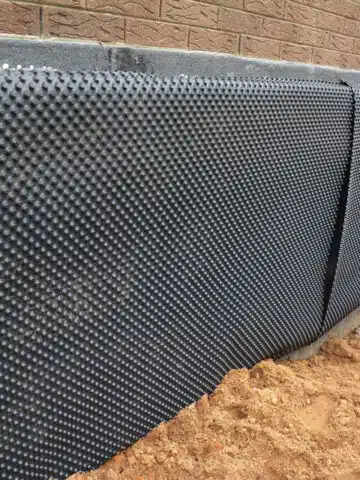Blog
6 Signs Your Property Requires Foundation Waterproofing
In the realm of commercial construction, maintaining the structural integrity of a building is paramount. Foundation waterproofing plays a pivotal role in ensuring the longevity and safety of a commercial establishment. Neglecting the early signs for foundation waterproofing can lead to costly damages and compromise the safety of the building. Here, we explore six key signs that indicate the urgent need for waterproofing your foundation.
Persistent Dampness or Moisture
Persistent dampness or moisture in the foundation of a commercial property is not just an aesthetic issue but a sign of deeper structural concerns. Often, when this moisture goes unnoticed or is disregarded, it leads to more significant complications that can jeopardize the very integrity of the building. This dampness usually originates from groundwater seeping into the foundation or from rainwater that hasn’t been appropriately diverted away from the building’s base.
Even in the absence of overt water leakage, the mere presence of damp walls can be a telltale sign of potential foundation problems. Over time, this trapped moisture can adversely affect the materials of the foundation, leading to weakening and eventual degradation. Furthermore, moisture laden environments within commercial spaces can encourage mold growth. Mold doesn’t merely discolor walls; it releases spores that can contaminate the air quality, posing health risks, particularly respiratory issues, for building occupants. Addressing the root cause of this dampness early on can prevent more significant damages, ensuring the longevity and safety of the commercial establishment.
Visible Mold or Mildew Growth
Mold and mildew, while often considered mere nuisances, are indicators of deeper foundational issues in a commercial building. Their growth is stimulated by dampness, which, as mentioned, can arise from foundation moisture. Dark spots on walls, a persistent musty smell, or increased respiratory issues among building occupants are all signals that mold and mildew are present and flourishing.
Not only do these fungi compromise the air quality within a space, making it hazardous for those with allergies or respiratory conditions, but their presence is also a glaring testament to underlying moisture problems. If not addressed promptly, this trapped moisture can weaken building materials, specifically the foundation, threatening the property’s overall structural integrity. It’s also worth noting that mold remediation can be a costly and lengthy process, especially in large commercial spaces.
Moreover, mold and mildew can have repercussions beyond structural concerns. For commercial establishments, they can pose legal and reputational risks, especially if building occupants or workers report health issues. Prioritizing foundation waterproofing upon observing mold or mildew growth not only preserves the building’s integrity but also ensures a healthier environment for all occupants.
Cracked or Buckling Walls
Cracks or buckling in the foundation walls, especially horizontal cracks, are alarming signs of structural issues. Water pressure from the surrounding soil can exert force on the foundation walls. Over time, this external pressure can cause the walls to crack, bow, or buckle. Such indications highlight the dire need for waterproofing solutions. While small, vertical cracks might result from natural settling, horizontal cracks usually suggest severe water damage and foundation stress.
Pooling Water Near the Building
After heavy rainfall or consistent watering of nearby landscape areas, if you observe water pooling close to the building’s foundation, it’s a potential red flag. This stagnant water can seep into the foundation, leading to an array of issues, including weakening the foundation materials and providing a habitat for pests. Proper drainage solutions and foundation waterproofing can rectify this issue, ensuring that water flows away from the building instead of accumulating near its base.
Bowed Basement Walls
Bowed basement walls are a sign of severe foundation distress. When the soil around the foundation retains moisture, it expands, exerting pressure on the foundation walls. Over time, this can lead the walls to bow inward. If left unchecked, this can lead to structural failure, posing immense risk to the property and its occupants. When such bowing is observed, it’s imperative to consult with a foundation specialist immediately and consider waterproofing options to prevent further damage.
Efflorescence on Walls or Floors
Efflorescence refers to the white, powdery substance that can appear on foundation walls and floors. It is the residue left behind when water seeps through the concrete, brick, or stone, and then evaporates, leaving salts behind. While efflorescence itself isn’t harmful, its presence indicates water infiltration. It’s a clear sign that your foundation is absorbing moisture and needs attention. Waterproofing solutions can prevent the moisture intake, ensuring that efflorescence doesn’t reappear and that the foundation remains robust.





